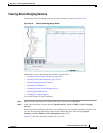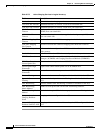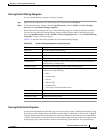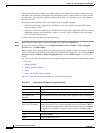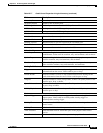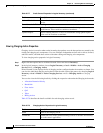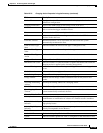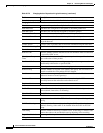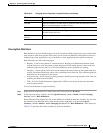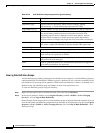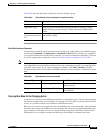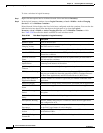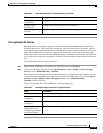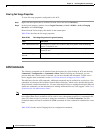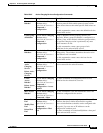
25-131
Cisco Prime Network 4.0 User Guide
OL-29343-01
Chapter 25 Monitoring Mobile Technologies
Working with Active Charging Service
Viewing Rule Definitions
Rule definitions are user-defined expressions, based on protocol fields and protocol states, which define
what actions to take when specific field values are true. Each rule definition configuration consists of
multiple expressions applicable to any of the fields or states supported by the respective analyzers.
Rule definitions are of the following types:
• Routing—Used to route packets to content analyzers. Routing rule definitions determine which
content analyzer to route the packet to when the protocol fields and/or protocol states in the rule
definition expression are true. Up to 256 rule definitions can be configured for routing.
• Charging—Used to specify what action to take based on the analysis done by the content analyzers.
Actions can include redirection, charge value, and billing record emission. Up to 2048 charging rule
definitions can be configured in the system.
• Post-processing—Used for post-processing purposes. Enables processing of packets even if the rule
matching for them has been disabled.
• TPO—Used for Traffic Performance Optimization (TPO) in-line service match-rule and match
advertisement features.
To view rule definitions in logical inventory:
Step 1 Right-click the required device in Prime Network Vision and choose Inventory.
Step 2 In the logical inventory window, choose Logical Inventory > local > Mobile > Active Charging
Services > ACS > Rule Definitions.
Prime Network Vision displays the list of rule definitions configured under the container. You can view
the individual rule definition details from the table on the right pane or by choosing Logical
Inventory > local > Mobile > Active Charging Services >ACS > Rule Definitions > Rule Definition.
Table 25-79 describes the details available for each rule definition.
EDR Name of the EDR format for the billing action in the ACS.
EGCDR Indicates whether eG-CDRs must be generated when the subscriber session
ends or an interim trigger condition occurs.
Rf Indicates whether Rf accounting is enabled or not.
UDRs Indicates whether UDRs must be generated based on the UDR format
declared in the rule base.
Radius Accounting
Record
Indicates whether radius accounting is enabled or not.
Table 25-78 Charging Action Properties in Logical Inventory (continued)
Field Description



